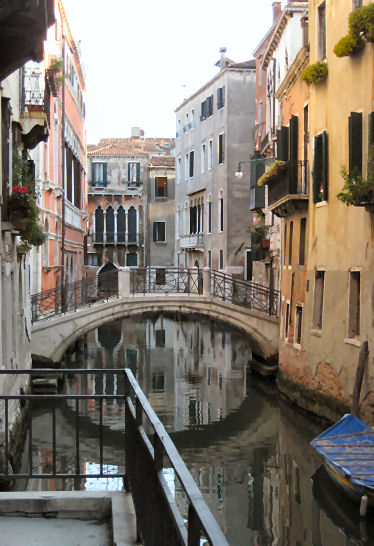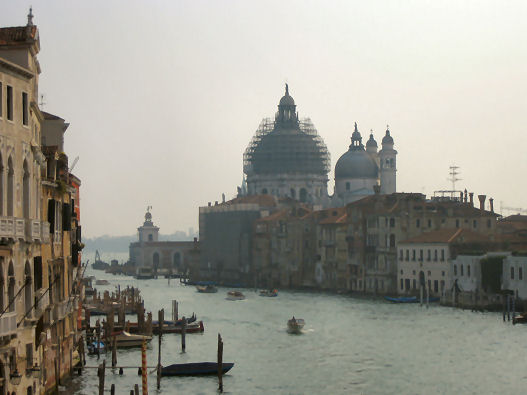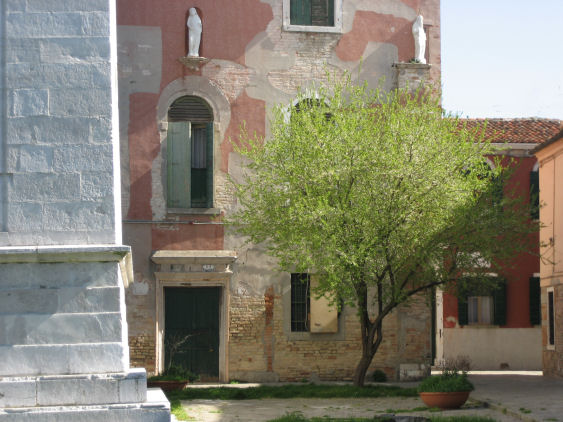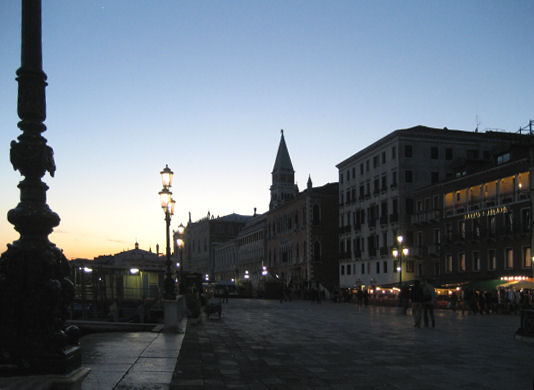| |

|
|
The Accademia
Well it's still covered in scaffolding and the room containing The
Tempest is still empty and closed. The good news is that The
Tempest itself is now in Room 13 towards the end of the gallery's
sequence of rooms, and so somewhat disconcertingly plonked into the 18th
Century. It can't be said to work or to be ideal, but at least it's back
on display, unlike the other fine small stuff in Room 4, which includes a
couple of fave Bellinis. The screens on the scaffolding around the gallery
entrance are still an eye-sore mess of graffiti and fly-posting, which leads
neatly onto...
Graffiti and dog s***
The twin modern plagues on the face of Venice's buildings and
paving, respectively. The graffiti seems to remain unfading in place
for years and years and to be concentrated around schools and other
educational institutions. The phenomenon is annoying enough in other
cities, but when the unlovely tags are on canal-side gothic palazzos it
grates on the senses even more. The prevailing wisdom is that the best
discouragement is cleaning it off immediately, like within days. But
Venice's graffiti remains for years and years.
And the city's dog owners
know nothing, it seems, of modern developments in canine care like
poop-scooping, although we did spot one chap chucking his dog's crap into
the canal.
Scaffolding update
The Piazza San Marco clock tower is now uncovered and looking
very white and clean. My favourite picturesque imitation palazzo, The
Palazzetto Stern, looks like its
scaffolding and sheeting is coming down, or maybe just falling down. But
the classic view towards the Salute church from the Accademia bridge just
gets worse, with three palazzos covered, and now the dome of the church
itself! (See below.)
 |
Churches
This trip was mostly about visiting old favourites from past trips, for
the benefit of my companion, but there were a couple of new ones on me.
San Pietro di Castello is out at the
far East end of town, just beyond the end of the Via Garibaldi. It was
Venice's cathedral, until 1807 when, the Republic having fallen, San Marco
took over this role, it having previously been the Doge's chapel. So it's
a biggy, and very calm and grey inside. There's no big name must-see art
here, although the St Peter and Saints by Basaiti has a Bellini-like
lustre. The interior makes the trip more than worthwhile, though, as does
the grassy and peaceful campo in front of the church with its mighty and
chunky white campanile by Codussi (see pics right and below).
There's also a tastefully ramshackle cloister next to the church, which on
our visit was blessed by a man singing a gondolier song with operatic
gusto and a fine voice which, echoing around the cloister's columns with
an accompaniment of birdsong, was pretty spine-tingling.
The Ognissanti church couldn't have
been more of a contrast - a small and very used convent church near San
Trovaso in Dorsoduro, with even more crumble than usual and artworks by
locals and kids, it was a small and modest treat. There was also a puzzling
sheet of hand-written text by which donations were sought, which was in
Italian and not easily understood by us, except that it did mention both Jesus
Christ and Elvis Presley. The latter, we think, being an indication of the
life of sin the writer had renounced by embracing the former.
|
 |






